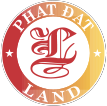ROBUSTA COFFEE
CONTRACT SPECIFICATION
| Trading Screen Product Name | ICE EU Robusta Coffee | |
| Commodity Code | LRC | |
| Contract Size | 10 tons / lot | |
| Price Quotation | USD / ton | |
| Trading Hours | Monday - Friday 04:00 P.M – 00:30 A.M (the next day) |
|
| Minimum Price Fluctuation | 1 USD /ton | |
| Contract Series | January, March, May, July, September, November, such that ten delivery months are available for trading | |
| Delivery Registration Day | The fifth business day prior to the First Notice Day | |
| First Notice Day | Fourth business day preceding the first business day of the delivery month. | |
| Last Trading Day | Fourth business day preceding the last business day of the delivery month at 12:30 (UTC). | |
| Margin | As MXV required | |
| Position Limit | As MXV required | |
| Price Limit |
|
|
| Settlement Method | Deliverable | |
| Quality Standards | No. 1, No. 2, No. 3 Robusta Coffee |
QUALITY STANDARDS
In accordance with the regulations of Robusta Coffee traded on Intercontinental Exchange Futures Europe (ICE EU).
Product infomation
Product introduction
Starting from the drink of the aristocracy, coffee spread around the world and became one of the most popular drinks. Evidence shows that coffee was used as far back as the 15th century, with beans being roasted similarly to modern methods. Developed from Africa and grown in over 70 countries, coffee is an important crop for many countries, especially for many developing countries, including Vietnam.
Coffee is the largest agricultural export in the world. There are 2 popular types of coffee in the world: Arabica coffee (about 60%) and Robusta coffee (about 40%).
Futures for Arbica Coffee (Coffee C) are traded on the US ICE Commodity Exchange (New York) and Robusta Coffee is traded on the ICE European Commodity Exchange (London).
In Vietnam, we grow both Arabica and Robusta coffee trees. Vietnam is the world's leading coffee producer and exporter. For that reason, coffee has become a highly traded commodity with the hedging needs of many individual and corporate investors.
Characteristics
Coffee is a perennial plant, usually pruned to control the height from 2-4m to make it easy to care for and harvest. There are two types of coffee with economic value: Arabica coffee and Robusta coffee. Arabica coffee beans have less caffeine (0.7-1.4%) than Robusta coffee (1.7-4%).
Arabica coffee is the most economically valuable coffee. Arabica coffee trees prefer to live in high mountains, can be harvested after about 3-4 years of planting and continuously for 20-25 years. The price of Arabica coffee is always higher than the price of Robusta coffee because of its delicious and unique taste. A bag of Arabica coffee usually costs twice as much as a bag of Robusta coffee.
Brazil and Colombia are the two countries that produce the most Arabica coffee in the world and the quality is also appreciated. Arabica coffee is called Colombian Milds if it comes from Colombia; called Brazilian Milds (or Brazilian Naturals) if from Brazil. Those from other countries are called Other Milds. Arabica coffee is grown a lot in Latin America, East Africa, and the Arabian peninsula. Meanwhile, Robusta is grown a lot in West and Central Africa, Southeast Asia and even Brazil. Arabica coffee plants give good quality when reaching the required height. Arabica coffee has a slightly sour taste, which is considered a special feature of this coffee. This is the main raw material of famous coffee brands in the world.
Robusta prefers to live in the tropics, the suitable altitude is below 1000m, needs a lot of sunlight. In Vietnam, 90% of the coffee growing area is this type of coffee. Vietnam is also the largest exporter of Robusta coffee
Production and consumption
Coffee is mainly produced by countries: Brazil, Vietnam, Columbia, Indonesia. Brazil alone produces about 2.5 million tons of coffee per year and has been the leading coffee producing country for more than 150 years (Figure 1). Raw green coffee beans from Brazil account for about 60% of global trade. The coffee industry in Brazil is truly an economic driver in the country.

Figure 1. Top 10 coffee producing countries in the world in 2018. Source Source: WorldAtlas, May 29,2019
Brazil and Vietnam are also the two leading coffee exporting countries in the world with a value of about 4.3 billion USD and 3.3 billion USD, accounting for 14.1% and 10.5% of the total value in the world. Brazil produces mainly Arabica coffee (about 85%), while Vietnam has up to 90% of Robusta coffee
We can also see that many developed countries, although not producing much coffee, are also among the top countries with the largest coffee export value in the world. (Figure 2)

Figure 2. Top 10 coffee exporting countries in the world. Source: World's top export
Coffee importing countries in the world are mainly developed countries, mainly coffee beans. In which, the United States imports about $5.7 billion of coffee annually, accounting for about 18.5% of the world. EU countries such as Germany, France, Italy, the Netherlands, Belgium, Spain... are also leading coffee importers. Japan is the only country in Asia in the top 10 coffee importing countries. (Figure 3)

Figure 3. Top 10 coffee importing countries in the world. Source: World's top export
Talking more about the United States, the largest coffee imports from 2 South American countries are Columbia (about 1.2 billion USD) and Brazil (0.96 billion USD). In addition, there are Vietnam, Canada, Guatemala and many other countries that also export coffee to the US worth hundreds of millions of dollars. The US is the country with the largest domestic coffee consumption in the world. gender. The second country is Brazil.
Factors that greatly affect the Coffee market
* Weather Events: Inclement weather around the world, especially in local cultivation regions can affect supply.
* Report on agriculture, domestic consumption, exports of exporting countries
* Related trade and political events bilateral, multilateral











